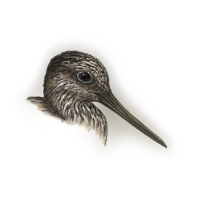|
Field
Guide IDs: BREEDING:
Muskeg, tundra. 1
brood. DISPLAYS:
NEST:
Slight depression
in moss on small hummock, usu near water by branch
or log, occ sheltered. Leaves blow in, or barely
lined with grass. EGGS:
Buff, marked with
dark brown, wreathed. 1.9" (49 mm). DIET:
Small fish, also
insects, snails, worms, tadpoles; berries. Often
forages by skimming surface in shallow
water. CONSERVATION:
Winters s to Tierra
del Fuego. NOTES:
Very noisy on
nesting ground; female close sitter. If clutch
lost, renests within 60'-90' of first nest.
Frequently stands on one foot. Defends foraging
territory in winter. Small, very vocal winter
flocks. Occasional visitor
to Lagunita, foraging at the lake edge in winter
and in shallow water and on mud as the lake recedes
in spring. ....Similar
Species: LesserYellowlegs ESSAYS: Shorebird
Feeding;
Shorebird
Migration and Conservation;
Spacing
of Wintering Shorebirds;
Temperature
Regulation and Behavior. REFERENCES:
Cramp and Simmons,
1983; Johnsgard, 1981; Myers and Myers,
1979. |
